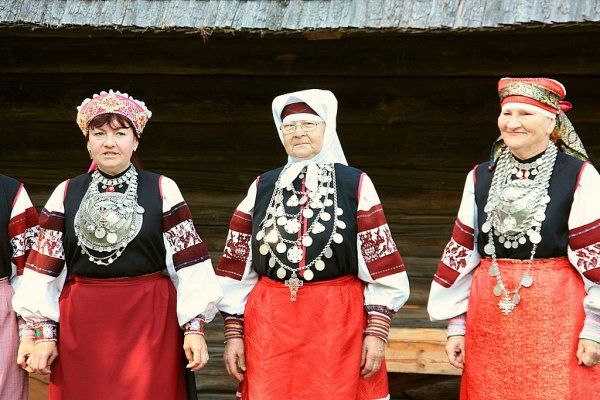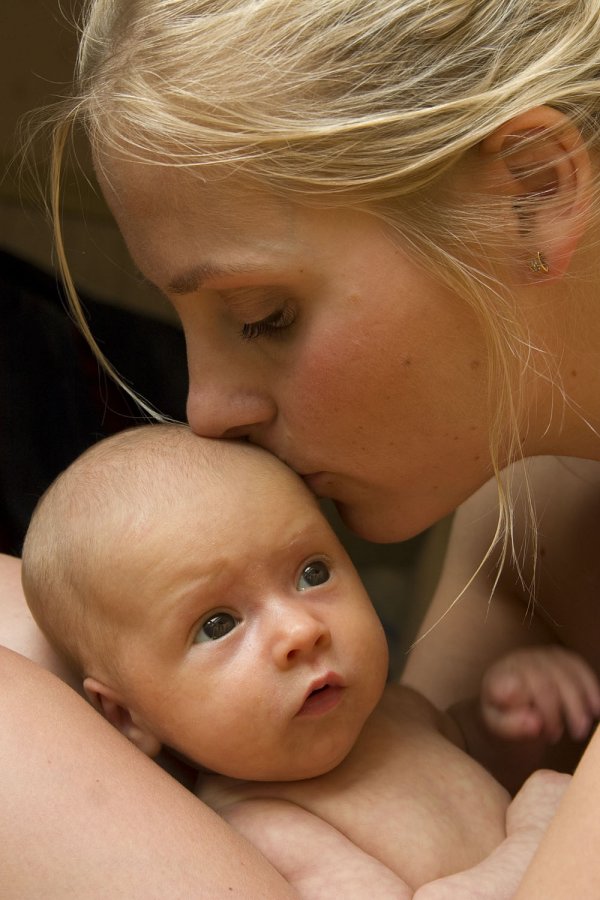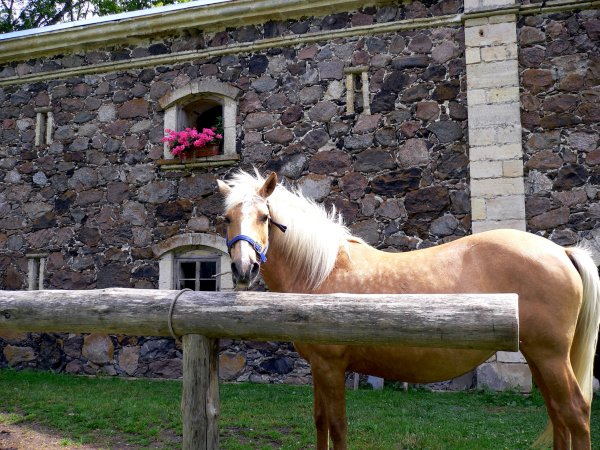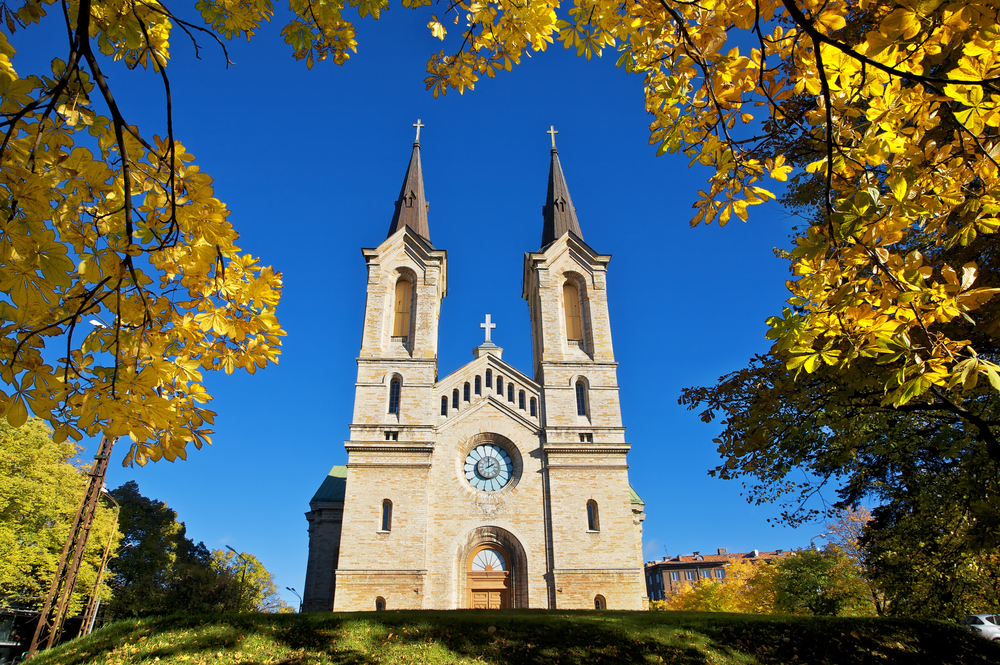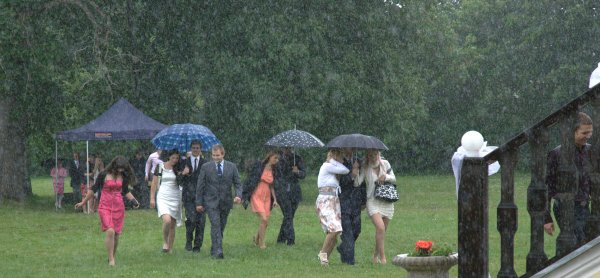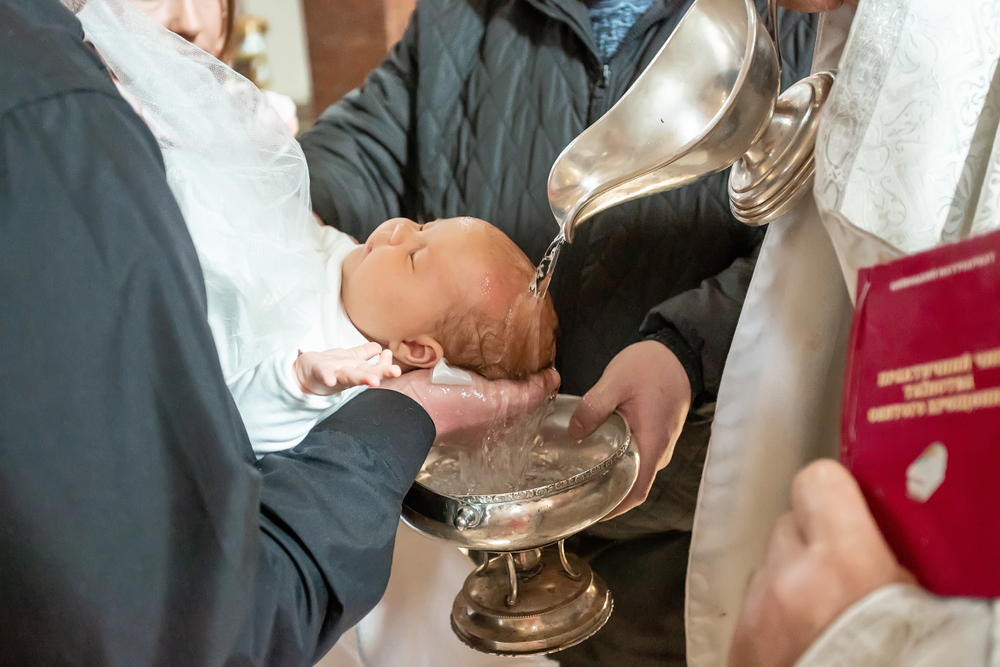General
Estonia has a culture rich in folklore that goes back to pre-Christian times, when Estonia’s native religion was nature worship. Today, Southern Estonia is more open in recognizing these folk traditions than Northern Estonia, perhaps because Northerners are more exposed to modern ways of life. However, Estonia’s pluralistic system allows different groups to preserve their cultural heritage and experiences while developing a common tradition that is uniquely Estonian, allowing the ancient and the modern to exist side by side.
Specific Superstitions
Ööitketaja (Night Wailer)
According to superstitious beliefs, the Ööitketaja, or the "Night Wailers," are midnight creatures that frighten children, cause illnesses, and even kidnap unsuspecting people at nightfall. The "Night Wailers" got their name because they supposedly cause the uncontrollable wailing of children at night.
Reports say that the Ööitketaja phenomenon began in Estonia during the 19th century. People used to blame the continuous wailing of children at night on the influence of dead relatives, nightmares and diseases supposedly caused by breaking a taboo, incorrect behavior of the mother during her pregnancy, or even the possibility that the mother may been startled by an animal during her pregnancy. The more recent superstition is that a creature, called a nututaja in Western Estonia and a tsisaja in South Estonia, causes the night wailing. Ööitketaja is very similar to the popular superstitious belief in the Evil Eye, and the methods of healing and prevention are also similar.
Tradition says that a child who starts to cry a lot is under the influence of the nututaja, often described as an old widow with black hair. It happens when she drops by to visit a family with a child. While visiting, she "pretends" to notice the child and comments, "What do you have there moving on the bed?" The couple naturally tells her that there is a child on the bed. She then says: "Ahem, ahem, but he is lying so still, do others have to do things for him?" This comment signals the start of the curse, and the child then starts wailing in his sleep. To stop the wailing and screaming, the parents must get hold of a piece of cloth from the old woman’s clothing and stroke the baby with it.
A supposedly obsolete method of breaking the curse was to dunk an old rope in water, whisk the child with it, coil the rope, and pull the child three times through the coil. This method was supposed to work only if performed on a Thursday evening.
Peko (God of Fertility)
In Estonian native religion, the peko is an agricultural deity who brings good luck to the household, increases harvest, or guarantees the fertility of the land. Peko is characterized by an image, made from wood remains, that is shaped like a human torso with small holes in the head for candles during offerings.
Peko belongs to the entire village and is kept in different farms every year. Farmers bury the effigy of the so-called God of Fertility underneath the grains in a storehouse. They bring out the image every time there is an agricultural fertility ritual or festivity. At a ceremonial feast in Peko’s honor, people make offerings of butter, curds, and wool. During this time, they ask Peko to look after their farm animals. After the feast, they give the leftover food to the poor. To decide which family has the right to keep Peko in their granary until the next year, the men compete with each other in a game of wrestling and fence-jumping.
The belief in Peko is particularly prevalent among the Setos, an ethnic minority that resides in the southeastern part of Estonia and still maintains a distinct culture and language (the Finno-Ugric language). The Setos are generally Orthodox Christians but also adhere to some pagan beliefs. The Church denounced the cult of Peko, but the rites and festivities in honor of the effigy continued in secret.
Today, the Seto people are actively involved in woodwork and handicrafts, and the pagan side of their heritage has left an indelible mark on the artistic side. Peko, God of Fertility, features prominently in their artwork as a visible reminder of the Seto way of life now and then.
Sacred Groves (Nature Worship)
A sacred grove is usually made up of deciduous or leaf-shedding trees. These are usually located on higher ground or in an open unadorned land or plain near the town, much like a platform where people would go to pray and bring offerings. Early people also believed that sacred groves could transfer location. Because the mysterious powers of a holy place may pose dangers to humans, believers exercise extreme caution in such a place.
Some say that sacred groves were burial grounds, which were considered taboo or off-limits. People were forbidden to desecrate or violate them, and no one was allowed to walk in a sacred grove, break any branches, or chop wood.
The connection between the groves and the dead faded out eventually but was replaced by mysticism. This time, people brought offerings to gnomes, fairies, and other supernatural forces assumed to be present in the grove or in the trees there. The offerings were mostly food or drinks, and even farm products such as flax, wool, yarn and cloth. Estonians believed that because of their offerings, the mythical creatures would protect them from bad luck and diseases, make their land and cattle abundant, and grant good fortune in hunting. Some people also made offerings directly to trees, known as the "sacred trees."
When Christianity arrived in Estonia, the destruction of the sacred groves began. The Catholic Church started building chapels and placing crosses where the sacred groves had stood. The Lutheran Church, on the other hand, tried to completely wipe out the customs and practices of nature worship, particularly the sacred groves and trees.
Although the worship of sacred groves and trees ceased in the early 19th century, reminders preserved by folk tradition exist to this day. There are about 500 sacred groves in Estonia today, considered a unique feature in Europe because they directly link the past with the present. Unfortunately, most of these sacred places are in bad condition and continue to deteriorate. Only a few of them are nationally protected.
Other Superstitions
Babies and Children
- If many people trample on the water from a newborn baby’s first bath, the baby will be downtrodden and despised.
- Do not pass anything over the baby's head, or the baby will not grow; if such a thing happens, pull a hair on top of the baby’s head.
- When the baby is laid down on the cradle for the very first time, place a knife, a cross, a key and some red yarn to protect the baby against evil or sorcery.
- A baby born on the last day of the week will marry late in life or never marry at all.
Baptism
- If there are only sons in the family, name the youngest boy after his grandfather to ensure that the next child born to the family will be a daughter.
- The first child born to a couple should be baptized and named after the parents (a baby girl after her mother, and a baby boy after his father) to make sure the child lives.
- A couple who does not want to have another child should give the last-born child his or her father’s name. This will guarantee that there will be no more babies.
- A couple should not have children of the same name, otherwise one of them will be written off from heaven.
- It is considered good luck to name a child after somebody famous; this means the child will also become famous.
- It is considered bad luck to utter a child’s name before baptism; otherwise the child will become a thief when he or she grows up.
- Place food on the table at home, but do not eat it until after the baptism ceremony is finished; doing this will save your child from ever going hungry.
- All throughout the baptismal ceremony, place a hymnbook under the baby’s head and a lighted candle beside it; this will ward off evil and protect the baby’s soul.
- If the baby holds his or her head up during the baptismal ceremony, this will signify long life; if the baby holds his or her head down, his or her life will be short.
- Some fathers run rapidly around the church during the baptismal ceremony in the belief that this will make his child exceptionally fast.
- Some parents bribe the sexton to obtain holy baptismal water to splash on the wall as high as they can; it is believed that doing this will make the child attain high honors.
- Talking during the baptismal ceremony will make the child will become a sleep talker.
- Scheduling a baptism right after a burial means the child will follow the dead.
- During baptism, make sure that nobody touches the baby’s chrisom (baptismal robe); this will ensure that the baby grows up to be quick and industrious.
- It is bad luck for the godparents to look at the baby during the baptismal ceremony, for the baby will see ghosts.
- It is bad luck to have a child baptized on the day of another child’s birthday.
Burials and the Dead
- The straw on which the sick person died should be carried out and burnt; by the footprints in the ashes you can tell if the next one to die will be a man or an animal.
- If one dies during a New Moon, he takes all the luck with him; if he dies in Shrovetide, he is buried as plainly as possible.
- Brushing a dead man’s head and laying the brush beside the body ensures that his spirit will rest in peace.
- It is bad luck for the hearse or the vehicle that carried a corpse to pass through the gates of the house right away; it should be left outside for a considerable amount of time, so nobody in the family will die soon.
- When a priest visits a sick man, he observes his horse as he draws near the house. If the horse hangs its head down, the sick person will never recover from his illness.
Marriage and Weddings
- A suitor should not ride a mare when he goes to court a girl, or there will be only daughters born of the marriage.
- If a suitor arrives on horseback on his way to court a girl, the saddle girth should be unfastened immediately. This will ensure an easy childbirth for the future wife.
- When the bride is betrothed, a red string should be tied around her body. After the wedding ceremony is completed, she must stretch out in such a manner to break the string. This will prevent difficult confinements in the future.
- After the wedding ceremony, the newlyweds should run out of the church at top speed holding hands to ensure rapid progress in their business endeavors.
- It is bad luck for a bride to accidentally fall or trip on the way to church, as this portends the early death of her first three or four children.
- It is bad luck for a bride to come out of the same gate through which a coffin or corpse has recently been carried.
- On the way to her wedding, the bride must not wear chains or bells and must be led solemnly across the aisle; otherwise, she will have restless and noisy children.
- Immediately after the wedding ceremony, the strongest among the relatives or guests should lift the bride and groom, as this will heighten their married bliss.
- As the bride enters her new home, she should be led through every part of the house while she drops ribbons or money into each room; doing this will guarantee happiness to the newlyweds.
- During the wedding feast, if a male child sits on the bride’s lap, she will bear sons.
- In some parts of Estonia, people would stick two swords into the wall over where the newlyweds are seated; the one whose sword vibrates the longest would live the longest.
- At the wedding feast, two candles will be lighted before the bride and bridegroom; the one whose light goes out first is the one who will die first.
- During the honeymoon, whoever falls asleep first will die first.
- It is said that if the groom’s attendant cuts a small piece of bread from the loaf, butters it and feeds it to the bride, their children will have small and smooth mouths.
- Rain during the wedding day brings bad luck, as it signifies frequent weeping for the wife.
Pregnancy
- Pregnant women should be careful not to throw the wood against the branches when lighting a fire; otherwise, she will go through a difficult labor.
- To prevent a difficult labor, a husband should step over his pregnant wife.
- Two pregnant women sneezing at the same time will have daughters.
- It is bad luck to step on a pregnant woman, for her child will have crooked or misshapen feet.
- If the parents want a boy, they should keep an ax under their bed; if they want a girl, then they should put a noodle under their bed instead.
- Pregnant women should not spill water on their clothes while they are doing the laundry, or the child will become a bed-wetter.
- If a pregnant woman touches a part of her body while witnessing a house burning, her child will have a mole on the same part of the body she touched.
- A child born with abnormalities means his or her mother had committed a grave sin.
- People believe that those born on a Sunday are especially fortunate. Children born in the evening are considered to be lucky, while those born in the morning have to work hard all their lives in order to make ends meet.
- After a mother gives birth and is ready to accept visitors, the first guests to arrive should not be poor or old; otherwise the child will grow up to be poor.
Copyright © 1993-2025 World Trade Press. All rights reserved.




